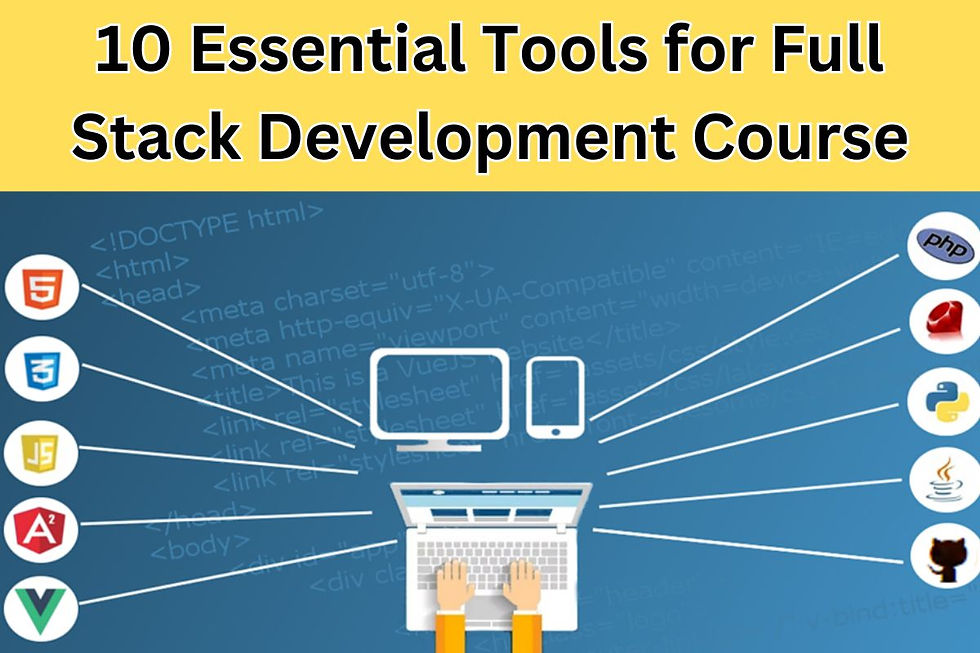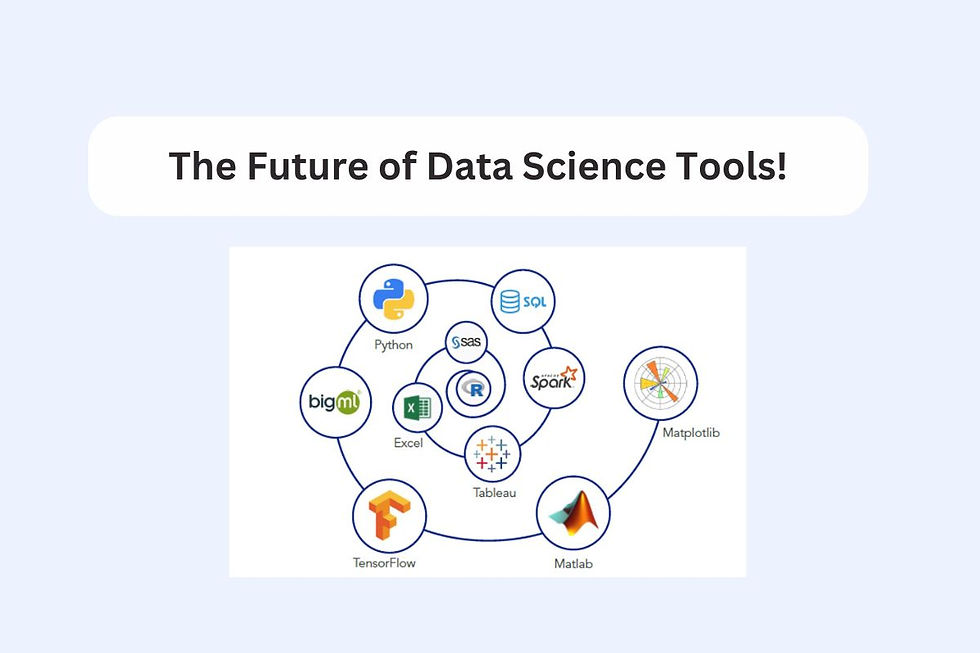10 Essential Tools for Full Stack Development Course
- archi jain

- Feb 21, 2024
- 2 min read

Introduction
Full Stack Development is a dynamic field that encompasses both frontend and backend development, along with the ability to work with databases and deployment processes. Mastering Full Stack Development opens up a plethora of opportunities in the tech industry. Understanding the essential tools required for this course is crucial for aspiring developers.
What is Full Stack Development?
Full Stack Development involves proficiency in both frontend and backend technologies, allowing developers to build complete web applications from start to finish.
Importance of Full Stack Development Course
A Full Stack Development course equips individuals with the skills needed to develop complex web applications, making them highly sought-after professionals in the tech industry.
Understanding Full Stack Development
Definition of Full Stack Development
Full Stack Development refers to the ability to work on both the client-side and server-side of web development, handling all aspects of building a web application.
Roles and Responsibilities of Full Stack Developers
Full Stack Developers are responsible for designing, developing, and deploying web applications. They possess a wide range of technical skills, including proficiency in programming languages, databases, and frameworks.
Essential Tools for Full Stack Development Course
Integrated Development Environments (IDEs)
IDEs like Visual Studio Code, Atom, and Sublime Text provide developers with a comprehensive set of tools for writing, testing, and debugging code efficiently.
Version Control Systems (VCS)
Tools like Git and GitHub enable developers to track changes to their codebase, collaborate with team members, and manage different versions of their projects effectively.
Front End Development Tools
Frameworks like React, Angular, and Vue.js empower developers to build interactive and responsive user interfaces for web applications.
Backend Development Tools
Node.js, Django, and Flask are popular choices for backend development, offering robust frameworks for building server-side logic and APIs.
Database Management Tools
MySQL, PostgreSQL, and MongoDB are widely used databases that provide developers with efficient ways to store, retrieve, and manage data for their applications.
Testing Tools
Tools like Jest, Mocha, and Selenium help developers automate testing processes, ensuring the reliability and stability of their web applications.
Deployment Tools
Platforms like Heroku, AWS, and Netlify simplify the deployment process, allowing developers to easily deploy their applications to the web.
Collaboration Tools
Communication tools such as Slack, Microsoft Teams, and Zoom facilitate collaboration among team members, enabling seamless communication and project management.
Continuous Integration/Continuous Deployment (CI/CD) Tools
CI/CD tools like Jenkins, Travis CI, and CircleCI automate the process of integrating code changes and deploying them to production environments, ensuring a smooth and efficient development workflow.
Monitoring and Logging Tools
Tools like New Relic, Splunk, and ELK Stack help developers monitor the performance and health of their applications, allowing them to identify and troubleshoot issues quickly.
Conclusion
Mastering the essential tools for a Full Stack Development course is crucial for aspiring developers aiming to embark on a career in web development. Enrolling in a Full Stack Development course in Gurgaon , Nashik , Chandigarh and all locations in India can provide comprehensive training and hands-on experience with these tools, equipping developers with the skills needed to streamline their workflow and construct resilient, scalable web applications. By continually exploring and refining these skills, individuals can stay at the forefront of this ever-evolving field.








Comments